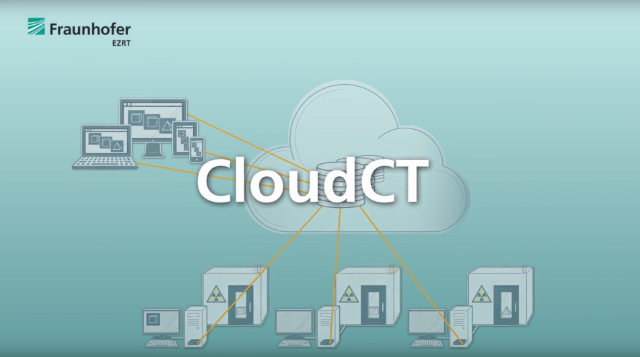Contact Press / Media
Thomas Kestler
Division Communications
Fraunhofer IIS
Flugplatzstraße 75
90768 Fürth, Germany
Phone +49 911 58061-7611
15.11.2018
Using computed tomography in industrial product development and production greatly improves processes. But handling the various CT data has been cumbersome up to now. For this reason, researchers at Fraunhofer IIS developed the web-based CloudCT software: it makes operating the CT and dealing with the data volume easier.

CloudCT – web-based data management for industrial CT, Fraunhofer EZRT/Fraunhofer IIS
Together with his team, Thomas Miller developed the time-saving, flexible solution for nondestructive testing: CloudCT. We talked with him about the challenges faced in development, current application options for companies, and planned ongoing development.
What initially sparked the idea for developing CloudCT?
At first, CloudCT was developed for internal purposes: At our location in Deggendorf, we operate many X-ray systems that are situated in many different rooms or even buildings. This means that starting or checking a measurement is not only troublesome, but it also takes a great deal of time. That’s why we wanted a system with which we could access CT data from anywhere. We used the input of employees to specify the features that our program was supposed to have. Afterward, we developed a user-friendly design and performed usability tests. And then we were already set to start implementation: we created a project and timing schedule and composed the software. So the CloudCT product was generated from an internal need that exists, however, in many other companies as well.
What was the greatest development challenge for you?
Our inventory of CT equipment is very heterogeneous because many come from different manufacturers and run with a variety of systems. So we had to develop the CloudCT system such that it offers flexible application for all users. This was a big challenge. An intensive exchange of information with various CT manufacturers made it possible for us to adapt CloudCT successfully for use with various systems.
How exactly does the installation of the system in a company work and how much time must be scheduled for that?
It is somewhat more complicated than just loading an app onto a smartphone, for example, or installing a program on a computer. A service technician installs the CloudCT software at the customer’s site. In general, the setup doesn’t require more than a day. But because each customer uses different systems and databases, the time and effort needed vary. Still, the expense of setting up the system can be amortized quickly because using CloudCT saves a tremendous amount of time.
What are the future plans for CloudCT?
In the future, it will be possible for users to visualize volume data three-dimensionally and interactively. Then, customers can easily view the 3-D volume data in their browsers and move or rotate it via mouse click. Because CloudCT is software, its development is not finished with version 1.0, of course. We are continually working on the software, always implementing new ideas. Using the software in our own laboratories helps us incredibly in development.
Nina Blumrich, a research assistant at Fraunhofer IIS, conducted the interview.